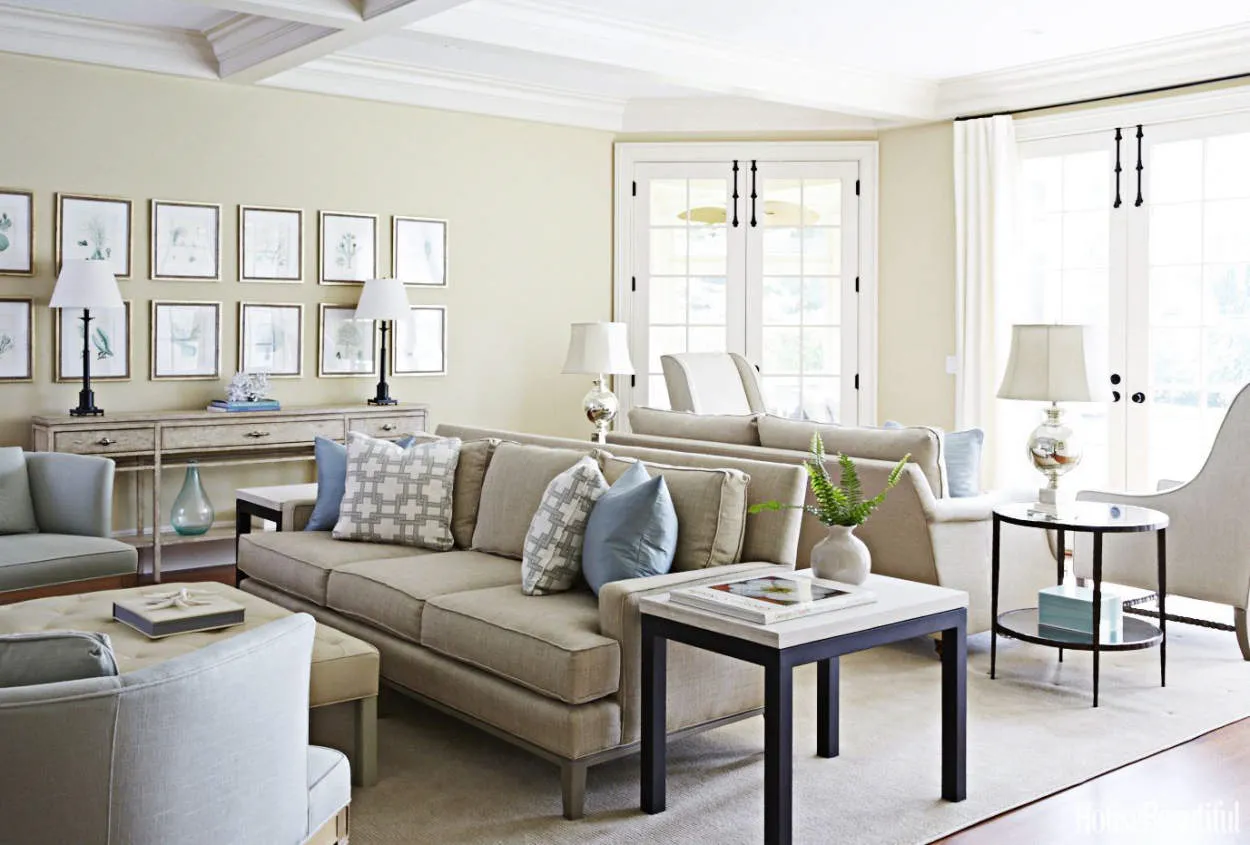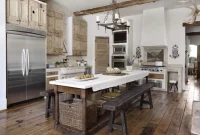Transformative Living Room Layouts.
Effective Furniture Arrangement
When it comes to creating transformative living room layouts, furniture arrangement plays a crucial role. The way you arrange your furniture can completely change the look and feel of your living space, making it more functional, inviting, and visually appealing.
Here are a few key tips to consider when arranging your furniture:
1. Define the Purpose
Before rearranging your furniture, determine the primary purpose of your living room. Do you want it to be a cozy space for relaxation, an entertaining area for guests, or a multifunctional space for various activities? Clearly defining the purpose will help guide your furniture placement decisions.
2. Consider Traffic Flow
Ensure there is enough space for easy movement and flow in the room. Avoid blocking pathways and doorways with furniture. Leave ample space for people to walk around without feeling cramped or restricted.
3. Create Conversation Areas
Arrange seating in a way that encourages conversation and social interaction. Position sofas and chairs facing each other to create cozy conversation areas. Add a coffee table or side tables within reach for convenience.
4. Utilize Space-Planning Tools
Consider using space-planning tools or online room layout planners to visualize different furniture arrangements before actually moving them. This can save time, effort, and potential mistakes.
5. Balance the Room
Avoid placing all the furniture against one wall. Instead, distribute furniture throughout the room to create a sense of balance. Experiment with different furniture arrangements to find the most visually pleasing setup.
6. Take Advantage of Natural Light
Position furniture in a way that maximizes natural light. Place seating near windows to enjoy the view and make the room feel brighter and more spacious.
By following these tips, you can create a transformative living room layout that not only enhances the functionality of the space but also brings a renewed sense of style and comfort to your home.
Zoning Your Living Space
In the quest for a more functional and appealing living room, zoning your living space can play a crucial role. By carefully defining specific areas within this central hub of your home, you can create a more organized and enjoyable environment. With the right layout, zoning can be transformative, providing a sense of purpose and clear separation for different activities.
1. Seating Area
Create a comfortable seating area as the focal point of your living room. Arrange sofas, chairs, and coffee tables in a way that encourages conversation and relaxation. Consider using rugs or lighting to visually define this zone within the overall space.
2. Entertainment Zone
If you love watching movies or playing video games, create a designated entertainment zone. Mount your TV or set up a media console against a wall. Arrange your seating in front of it, ensuring everyone has a good view. You can also add speakers or soundbars to enhance the audio experience.
3. Work or Study Corner
Incorporate a small work or study corner in your living room. Place a desk, chair, and shelves against a wall to define this zone. This setup allows you to stay connected with the rest of the family while handling important tasks or remote work.
4. Reading Nook
If you are a book lover, consider adding a cozy corner or a reading nook. Place a comfortable chair or a small couch with a bookshelf nearby. Ensure there is adequate lighting, either through natural light or a reading lamp, for a perfect reading environment.
5. Children’s Play Area
If you have young children, designate a specific area for their toys and activities. Use storage solutions like baskets, bins, or shelves to keep everything organized. Consider using soft rugs or padded mats for added safety and comfort.
By implementing these transformative living room layouts, you can make the most out of your space and cater to different needs and interests. Zoning your living space promotes a harmonious environment where different activities can coexist without disrupting each other. Experiment with different arrangements to suit your lifestyle and enjoy a more functional and visually appealing living room.
Integrating Focal Points
In the quest to create transformative living room layouts, integrating focal points is a crucial step. A focal point acts as the anchor of a room, drawing attention and setting the tone for the space. By strategically incorporating focal points, you can enhance the overall aesthetic and functionality of your living room.
Selecting a Focal Point
The first step is to identify the focal point that best suits your living room. This could be a large window with a breathtaking view, a stunning fireplace, a captivating piece of art, or even a TV wall unit. The choice of focal point depends on your personal taste and the desired atmosphere for your living room.
Arranging Furniture
Once you have chosen your focal point, arrange the furniture in a way that complements and highlights it. For example, if your focal point is a fireplace, position the seating area to face it, creating a cozy and inviting ambiance. If it is a window with a view, arrange your furniture to maximize the sightlines and create a comfortable nook to enjoy the scenery.
Layering with Focal Points
Don’t limit yourself to just one focal point. Consider incorporating multiple focal points to add depth and visual interest to your living room. For instance, you can combine a striking piece of artwork with a decorative lighting fixture or place a stylish bookshelf alongside a grand piano. Layering focal points allows you to create a multifaceted space that engages and captivates.
Creating Balance
While integrating focal points, maintaining balance is essential to ensure a harmonious look. Distribute the visual weight evenly throughout the room by arranging complementary elements around the focal points. This could be achieved through the use of symmetrical arrangements, color schemes, or by incorporating contrasting textures and shapes.
In Conclusion
Transformative living room layouts can be achieved by skillfully integrating focal points. These points of emphasis serve as focal anchors that elevate the overall design and create a captivating atmosphere. Selecting the right focal points, arranging furniture, layering with additional focal points, and creating balance are key strategies in transforming your living room into a functional and visually appealing space.
Open Plan vs. Traditional Layouts
In the world of home design, there has always been a debate between open plan layouts and traditional layouts. Both options have their own unique advantages and disadvantages, so deciding which one is best for your living room can be a challenging task.
Open Plan Layouts
Open plan layouts have gained popularity in recent years due to their ability to create a more spacious and connected living space. By removing walls and barriers, open plan layouts allow for better flow of natural light and easy interaction between different areas of the home. They are particularly suitable for small living rooms, as they can make the space appear larger.
However, it’s important to consider the potential downsides of open plan layouts. As there are no walls to separate spaces, noise and smells can easily travel throughout the entire area. Privacy might also be compromised, especially if you have guests or family members over.
Traditional Layouts
Traditional layouts, on the other hand, provide a more defined and formal structure to the living room. They are characterized by individual rooms separated by walls, allowing for more privacy and a designated space for specific activities. Traditional layouts are ideal for those who prefer a clear separation between the living room, dining area, and kitchen.
However, traditional layouts can sometimes make a space feel smaller and more closed off. The lack of open flow can restrict natural light and limit interaction between family members or guests. Additionally, if you have a smaller living room, traditional layouts may not be as space-efficient as open plan designs.
Making the Right Choice
Ultimately, the decision between open plan and traditional layouts depends on your personal preferences and the size of your living room. Consider the pros and cons of each option and evaluate which layout aligns with your lifestyle and priorities.
Remember, there is no one-size-fits-all approach, and you may even choose to combine elements of both layouts to create a unique and transformative living room that perfectly suits your needs.
Using Rugs to Define Areas
In the world of interior design, rugs play a crucial role in defining and separating different areas within a living room. By strategically placing rugs, you can create distinct zones that serve different purposes and enhance the overall aesthetic appeal of your space.
One way to utilize rugs is by using them to delineate seating areas. Placing a large rug underneath your sofa, armchairs, and coffee table instantly gives your living room a defined gathering space. This not only adds visual interest but also helps to anchor the furniture arrangement.
Rugs can also be used to highlight specific areas or objects. For example, placing a rug underneath a reading nook with a cozy chair and a bookshelf creates a cozy and inviting space for relaxation and reading. Similarly, a rug beneath a dining table can emphasize the dining area, making it feel separate from the rest of the room.
Another way rugs can define areas is by creating pathways. If you have an open-concept living room, using a rug to guide traffic flow can help establish clear pathways between different zones. This is especially useful in larger living rooms where multiple activities are taking place simultaneously.
When choosing rugs for area definition, consider the size, shape, and color. A larger rug is usually more effective in establishing distinct areas, while a small rug may only create a visual clutter. Additionally, sticking to a cohesive color palette or pattern scheme throughout the room can create a harmonious atmosphere.
To conclude, rugs are not only decorative elements but also functional tools that can transform the layout of your living room. By using rugs to define areas, you can create a visually appealing and well-organized space that reflects your personal style and enhances your daily living experience.
Conclusion
Transformative living room layouts offer endless possibilities for creating a functional and stylish space. By incorporating versatile furniture, strategic placement, and smart storage solutions, you can easily adapt the room to cater to various activities and requirements. Whether it’s hosting guests, relaxing with a book, or enjoying movie nights, these layouts allow you to make the most out of your living room.




